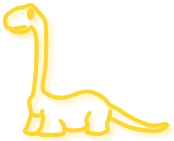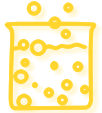
80 million years ago
Dinosaur bone fossils from this period show possible evidence of containing cancerous cells.
3000 BC
Evidence of cancer found in Egyptian mummies from this period.
1600 BC
Egyptian papyruses describe treatments for cancer including cutting out with a knife or burning with red-hot irons. Stomach cancer was treated with boiled barley mixed with dates, cancer of the uterus by a concoction of fresh dates mixed with pig's brain introduced into the vagina.
 400 BC
400 BC
Evidence of cancer found in mummies of pre-Columbian Incas of Peru.
300 BC
Hippocrates, the Greek 'Father of Medicine', named a range of tumours, lumps and bumps as carcinos and carcinoma. It was thought cancerous tumours had roots spreading out like the legs of a crab. Cancer was thought to be caused by too much black bile in the body.
 50 AD
50 AD
Like the Greeks, the Romans found that some tumours could be removed by surgery and cauterised (burnt), but no medicine seemed to work. They found that surgery sometimes increased the spread of the cancer, or that tumours sometimes grew again.
500–1500 AD
Little progress was made in understanding cancer. It was still believed to be caused by too much black bile. Surgery and cautery were used on smaller tumours. Caustic (burning) pastes, usually containing arsenic, were used for control of more extensive cancer. Phlebotomy (blood-letting), diet, herbal medicines, powder of crab and other symbolic charms were used.
 1500 AD
1500 AD
Autopsies (examining bodies to find out the cause of death) were conducted more often and understanding of internal cancers began to improve.
1650 AD
 The development of microscopes, and better understanding of cells and the blood and lymphatic systems were major steps in improving understanding of cancer.
The development of microscopes, and better understanding of cells and the blood and lymphatic systems were major steps in improving understanding of cancer.
1750 AD
Causes for some cancers suggested. For example, snuff was linked to cancer in the nose and soot to scrotal cancer in chimney sweeps.
1840–1900
 Important discoveries in anaesthetics and control of infection improved surgical methods.
Important discoveries in anaesthetics and control of infection improved surgical methods.
1895
X-rays discovered.
1898
The radioactive substance, radium was discovered. It is now used to treat some types of cancer.
 1900
1900
Hundreds of materials, both man-made and natural, were recognised as causes of cancer (carcinogens). Improvements made in diagnosing (identifying) diseases and the changes those diseases bring about in the body, due to advances in areas of science such as physiology, biochemistry and molecular biology.
1900–1950
Radiotherapy—use of radiation to kill cancer cells or stop them dividing—was developed as a treatment.
 1945
1945
Chemotherapy—use of drugs to treat cancer—was tested.